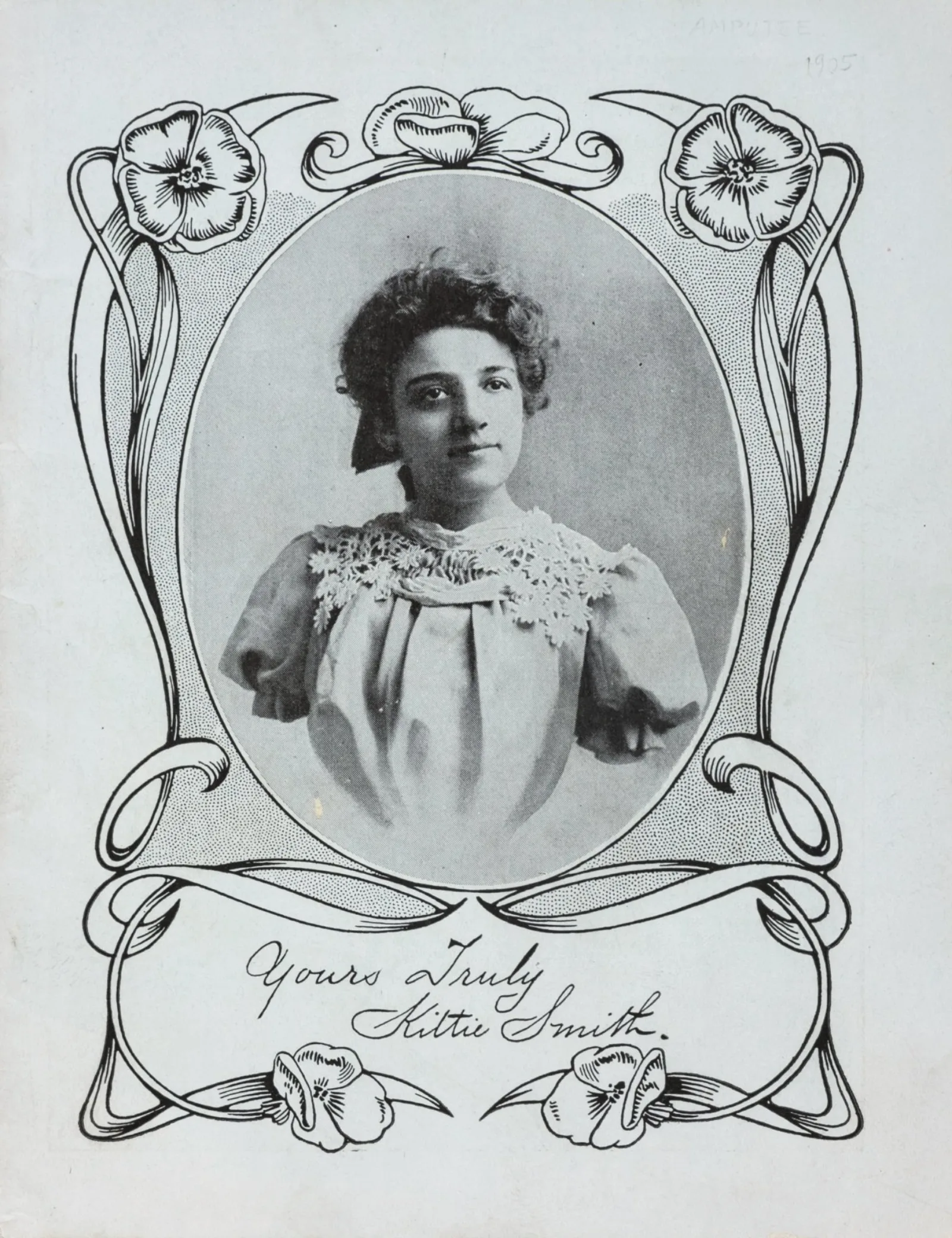Kittie Smith smiles on the cover of “My Life Story” above her neat signature. Inside the pamphlet are photographs of drawings and a quilt she made using her feet following the amputation of her arms. On the cover of his pamphlet, “The Blind Hobo,” A. G. Haughton demonstrates his method of leaping onto a moving freight train. One-legged long-distance walker and dancer Ralph Tompkins sells sheet music for his hit song “Won’t You Be a Friend of Mine.” And disabled veteran V. W. Bruce offers a poem commemorating his experience with the 17th Michigan Infantry during the Civil War.
These are a few of the people whose stories are documented in the Newberry’s newly acquired Mendicant Ephemera Collection. The collection includes nearly 200 pamphlets, postcards, handbills, photographs, and other printed items sold by the disabled or impoverished to support themselves—mostly from the United States, but with some European examples. Taken as a whole, they form a portrait of nearly a century of lives lived without a safety net.
Why Do These Things Exist?
Traditions of mendicancy—the practice of surviving on donations, from the Latin word for “begging”—have deep roots in Buddhism, Christianity, and other religions. The creators of items in this collection are nearly all laypeople—not the monks, nuns, or priests of earlier mendicant traditions—but they often touch upon their religious faith.
Paradoxically, the term “mendicant” is both misleading and particularly apt for this collection, as these individuals who were selling photos, poems, autobiographies, and other items were not begging at all—rather, they were exchanging an item for either a set price or a donation (typically phrased as “what you please” to pay). In the U.S., such distinctions became particularly important after the Civil War, when thousands of wounded survivors returned home and urban populations exploded.
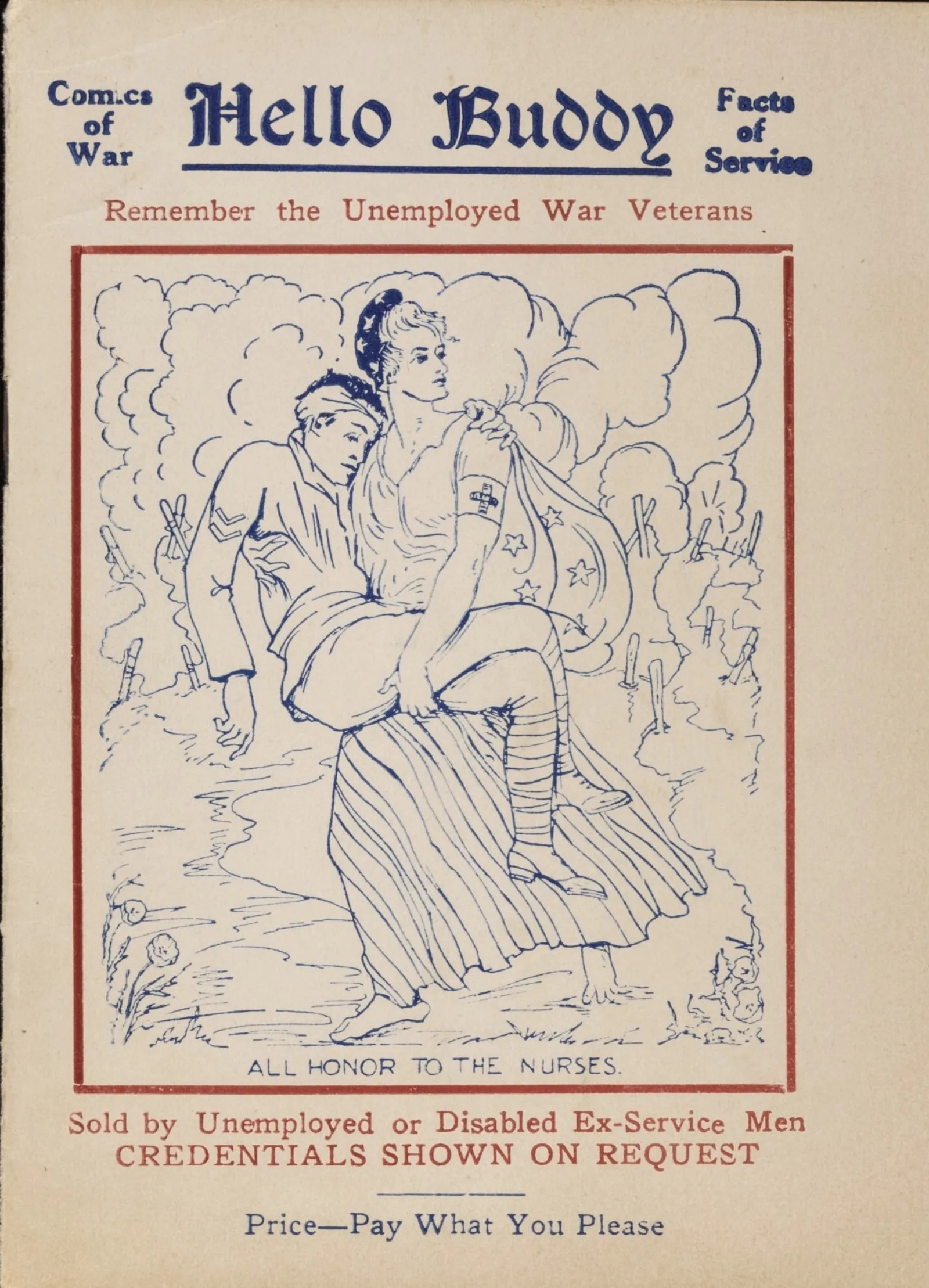
In her groundbreaking 2009 book The Ugly Laws: Disability in Public, Susan M. Schweik tracks the development of ordinances in cities and towns across America focused on removing “unsightly” beggars from public places.
The most infamous example of such an “ugly law” was passed by Chicago’s city council in 1881; in dehumanizing language, it specified that “Any person who is diseased, maimed, mutilated, or in any way deformed” who “expose[d] himself to public view” on streets or in other public places would be fined $1 per offense. It stayed among the city’s ordinances until 1974.
Selling a pamphlet, handbill, or card helped unsheltered and disabled people to avoid charges of vagrancy and argue that such laws threatened their livelihoods. In other cases, creators sold their items by mail, attempting to raise funds to allow them to stay in their homes and support themselves and their families.
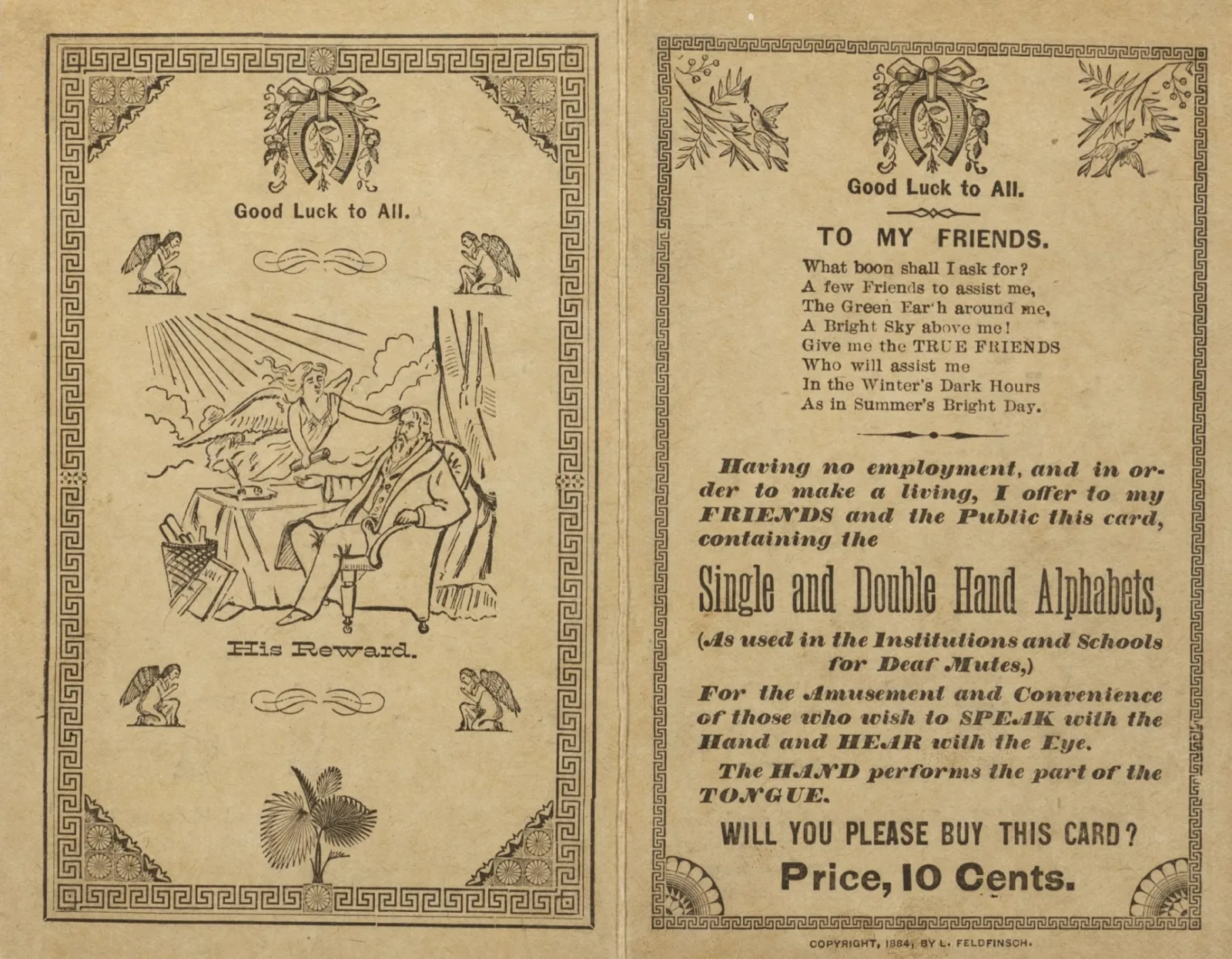
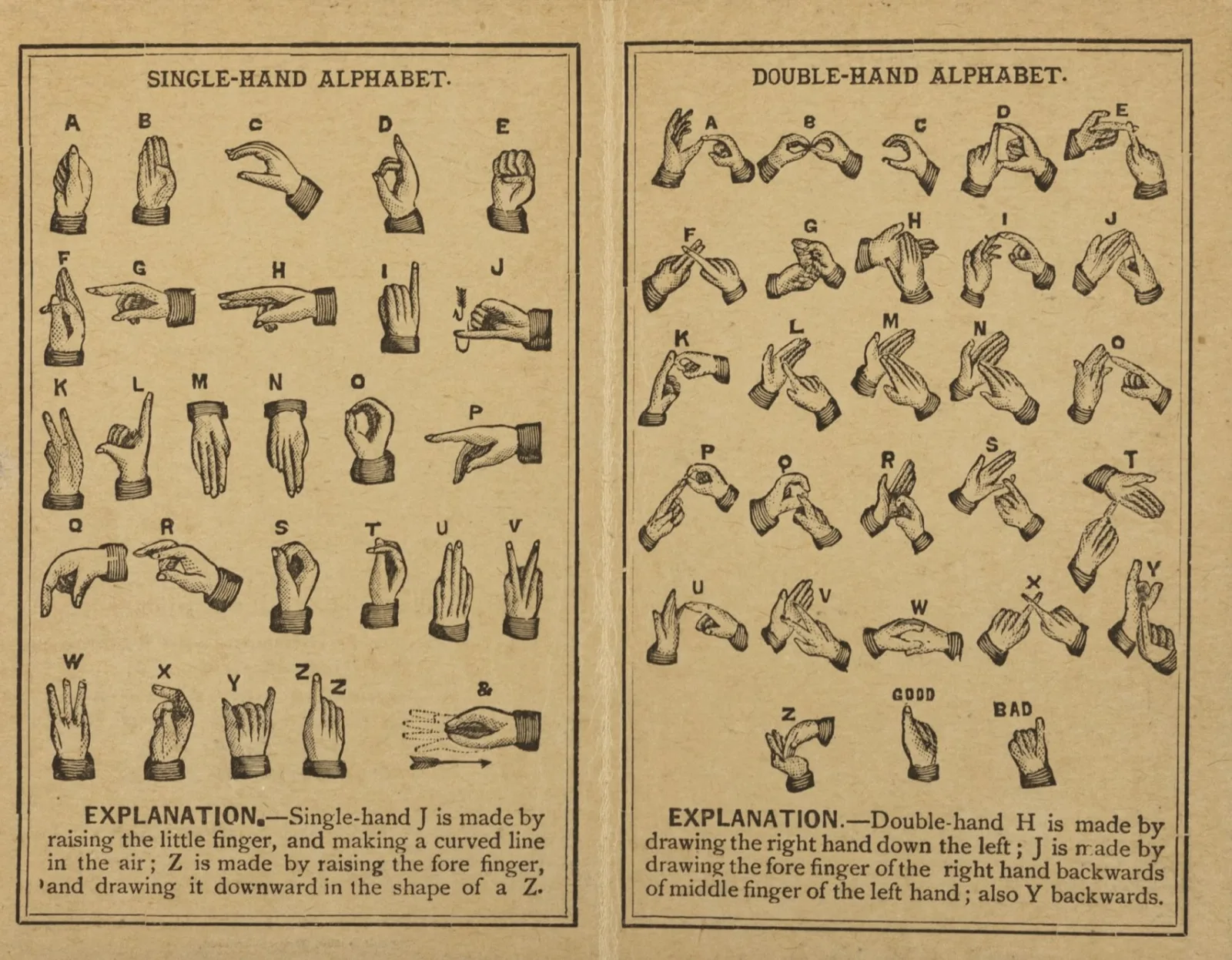
Of course, the money itself was also important to the sellers. Most American mendicant ephemera dates from the 1860s to the 1930s, prior to the Social Security Act and other New Deal programs that were established during the Great Depression. Millions of unemployed and underemployed people with disabilities struggled mightily during this time to make ends meet.
Beyond their utility as objects to be sold, the items helped to fill the deep need of their writers to share their stories, even in a society that was actively hostile to their existence. The poetry and prose composed by these writers could be derivative or inexpert. But they do, indeed, form a body of mendicant literature—work begging to be read and understood, to make a connection on a human level. Thus, the term “mendicant” is particularly apt for this collection.
Even the items that reprint or provide only slight variations on popular, frequently reprinted poems, such as two standards, “The Empty Sleeve” (typically sold by disabled Civil War veterans) and “The Blind Man’s Appeal,” often include brief notes about the individual seller—that they lost their sight due to an errant spark while working as a blacksmith; which unit and battles they served in; where their work on a railroad led to the loss of a limb.
%202.webp)
In the case of the pamphlet of popular songs sold by husband and wife James and Mary Lawler, they share the causes that led to their blindness as children and announce, “Their work on the streets and in selling these books is their only means of support.”
%202.webp)
How Did They Get Here?
Almost always cheaply printed (often with donated labor or materials), cheaply bought, and treated as disposable, most mendicant items are vanishingly rare—truly ephemeral. One bookseller, Marc Selvaggio, has built and sold two of the largest collections focused on the topic: one at Harvard’s Countway Library of Medicine, and the other now at the Newberry. A third was assembled by Professor Robert Bogdan as part of his larger Disability Collection and is now at Yale’s Cushing/Whitney Medical Library.
The two collections that Selvaggio assembled have virtually no duplication between them. Many of the items in the Newberry collection are the only known copy–most are one of fewer than five copies anywhere. Thanks to the generosity of donors David and Anita Meyer, the Newberry acquired 165 items from Selvaggio in 2019, adding to the dozens of individual examples collected over the past few years.
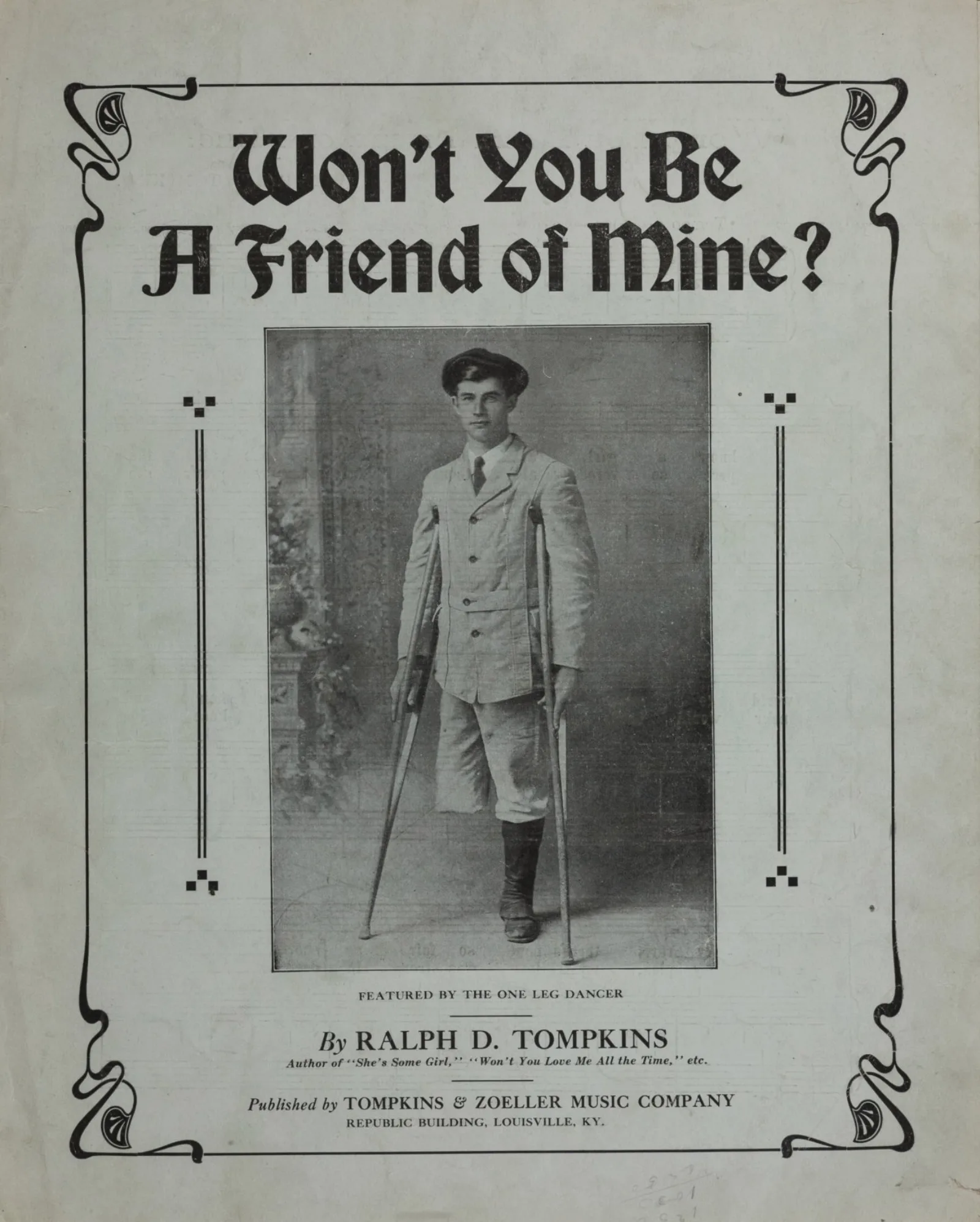
Finding mendicant literature in library collections has always been challenging. Catalog records have not typically included a reference to the mendicant nature of the item—and if they do, it is quoted from the phrasing on the item in a way that makes finding similar items challenging.
The Mendicant Ephemera Collection was cataloged by Principal Cataloging Librarian Jessica Grzegorski. She explains her approach to this project:
“One of the biggest challenges of cataloging these materials is describing them in a way that makes them accessible to interested researchers while using respectful language regarding disability. Including text quoted directly from a piece of mendicant literature allows the creators to speak for themselves about the nature of their disability and their current life circumstances. These quotes are also searchable in the catalog, increasing the chance that the items will be located through a keyword search.
“However, some of the language relating to disability used in these historical materials is considered offensive or harmful today. To help mitigate this harm, the Newberry’s finding aid for the Mendicant Ephemera Collection is transparent about what language, offensive or otherwise, is quoted directly from the materials.
“Some in the disability community prefer to describe themselves person-first language (e.g., ‘I am a person who is blind’), while others prefer identity-first language (e.g., ‘I am blind). Neither option is better than the other and depends on the preference of the individual with disabilities. We decided to take a person-centered, rather than disability-focused, approach to description. In the finding aid, the collection is divided into series based on the creator’s type of disability. However, rather than phrasing a series title as “Appeals by the Blind,” for example, the finding aid uses the person-centric phrasing “Appeals by People who are Blind.” This phrasing acknowledges that people with disabilities are multi-dimensional individuals who are not defined exclusively by their disabilities. In catalog records, this approach extends to subject headings, which cover many aspects of the lives of people with disabilities. For example, some of the creators of mendicant literature are artists, musicians, construction workers, or railroad employees, in addition to being blind or an amputee. Adding multiple subject headings improves access for researchers while also highlighting the multifaceted lives of people with disabilities.”
“ Adding multiple subject headings improves access for researchers while also highlighting the multifaceted lives of people with disabilities.”
Jessica Grzegorski
Principal Cataloging Librarian
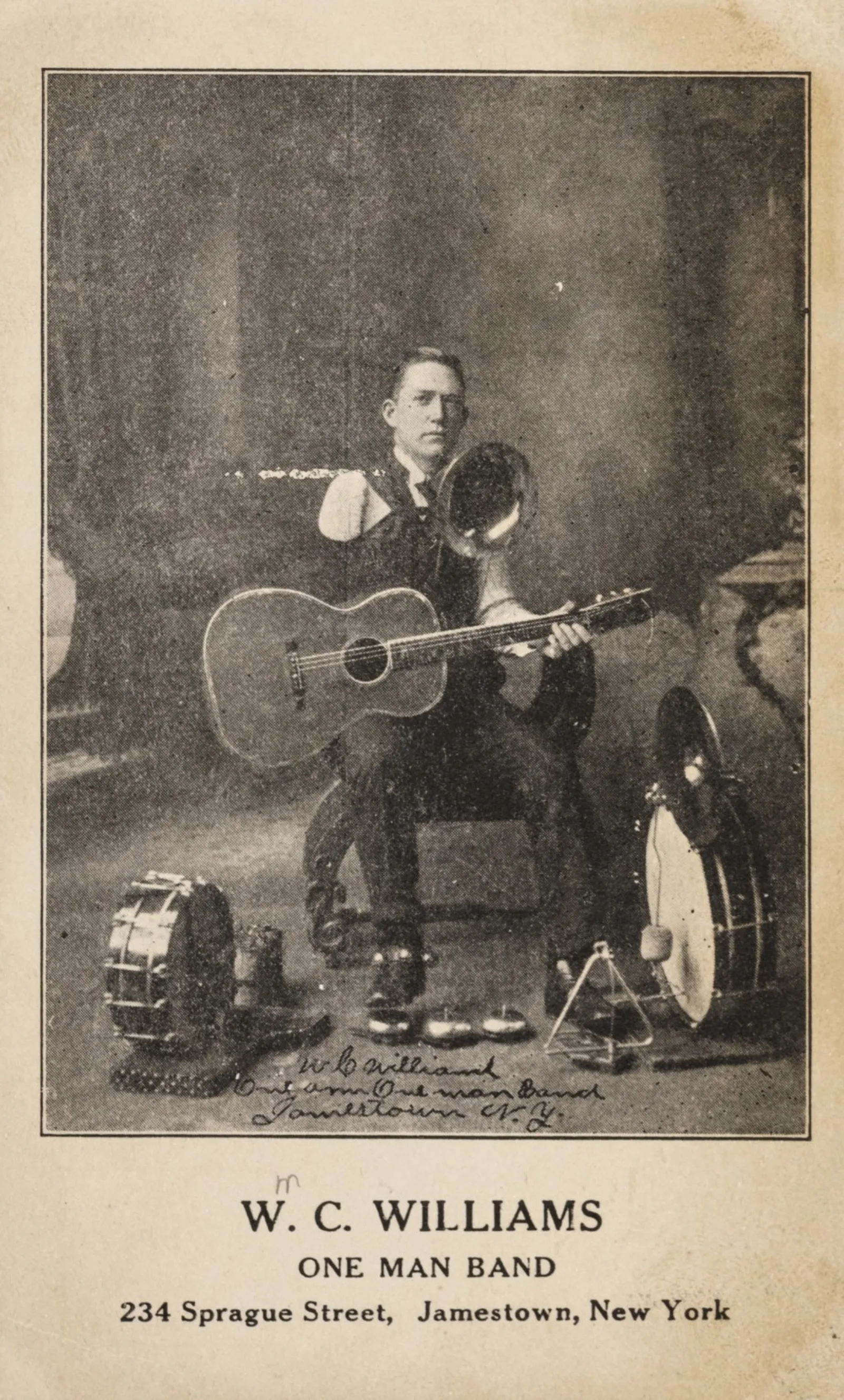
Why Collect Them?
As with most ephemera collections, the utility of the collection grows along with its size, allowing comparisons across time, geography, and demographics. Making a larger collection of these items visible and available for use together should facilitate a deeper understanding of a range of topics.
Researchers in the field of disability studies will surely benefit from this collection, but other enlightening approaches to the collection might be made by historians of public policy, the working class, and social change. Literary scholars interested in autobiography and other kinds of “life-writing,” bibliographers, and even business historians will also find unstudied sources here.
In addition to their value for research, the items in this collection are important as a step toward addressing an archival silence in both the Newberry’s collections and in the historical record at large. Improving and ensuring the representation of groups such as people with disabilities, people without shelter, and people living in poverty in our collections is essential.
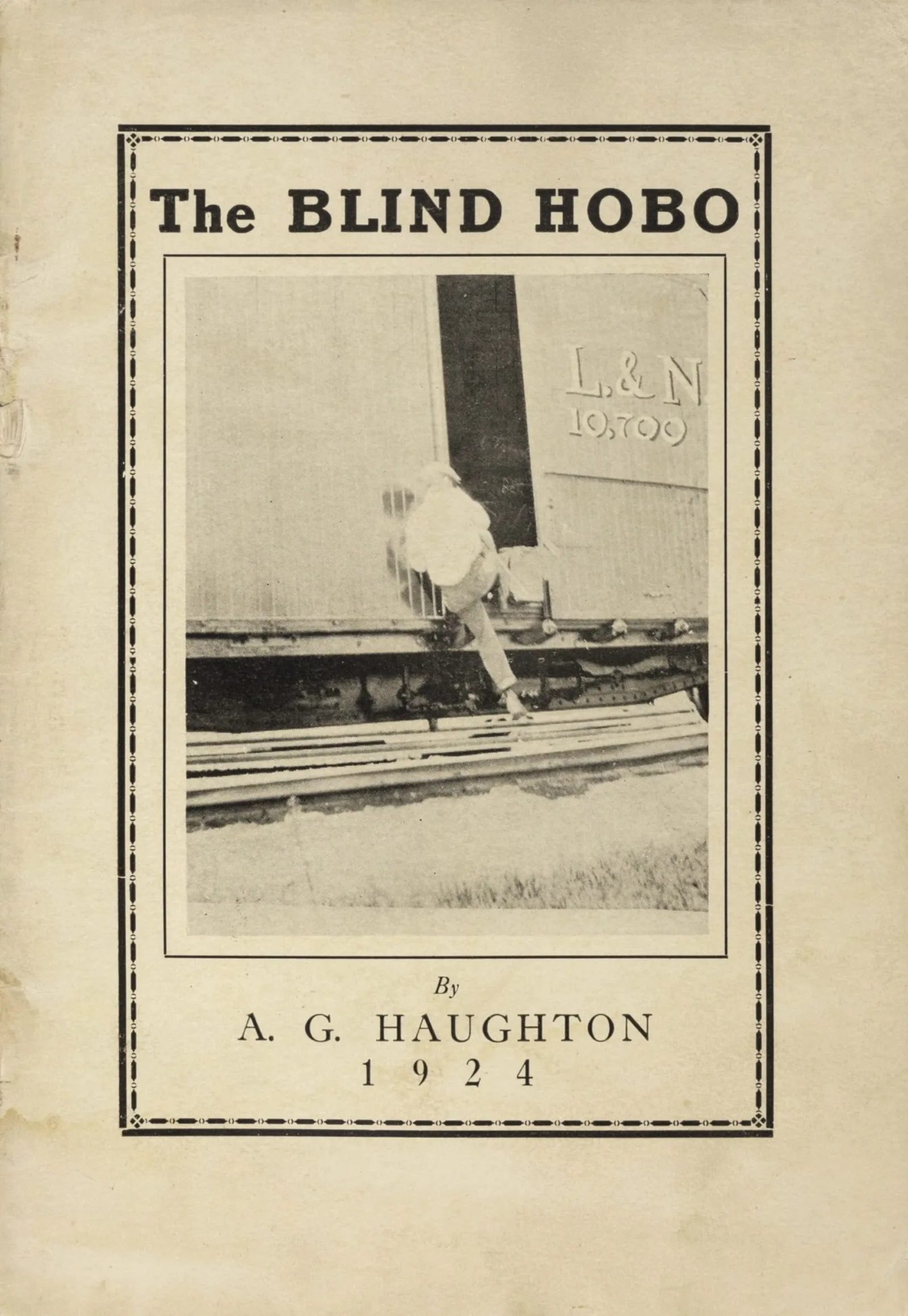
The materials in the Mendicant Ephemera Collection help us lessen the distortions that stem from many disabled and poor creators’ relative difficulty accessing the means to share and distribute their own experiences, and from institutional collecting practices and hidden biases that often privilege materials from upper- and middle-class creators. Having Kittie Smith’s autobiography available in the same space as Benjamin Franklin’s, and the appeals of injured railroad workers available alongside the records maintained by railroad companies, makes an important statement about our shared humanity.
About the Author
Will Hansen is Director of Reader Services and Curator of Americana at the Newberry Library.
